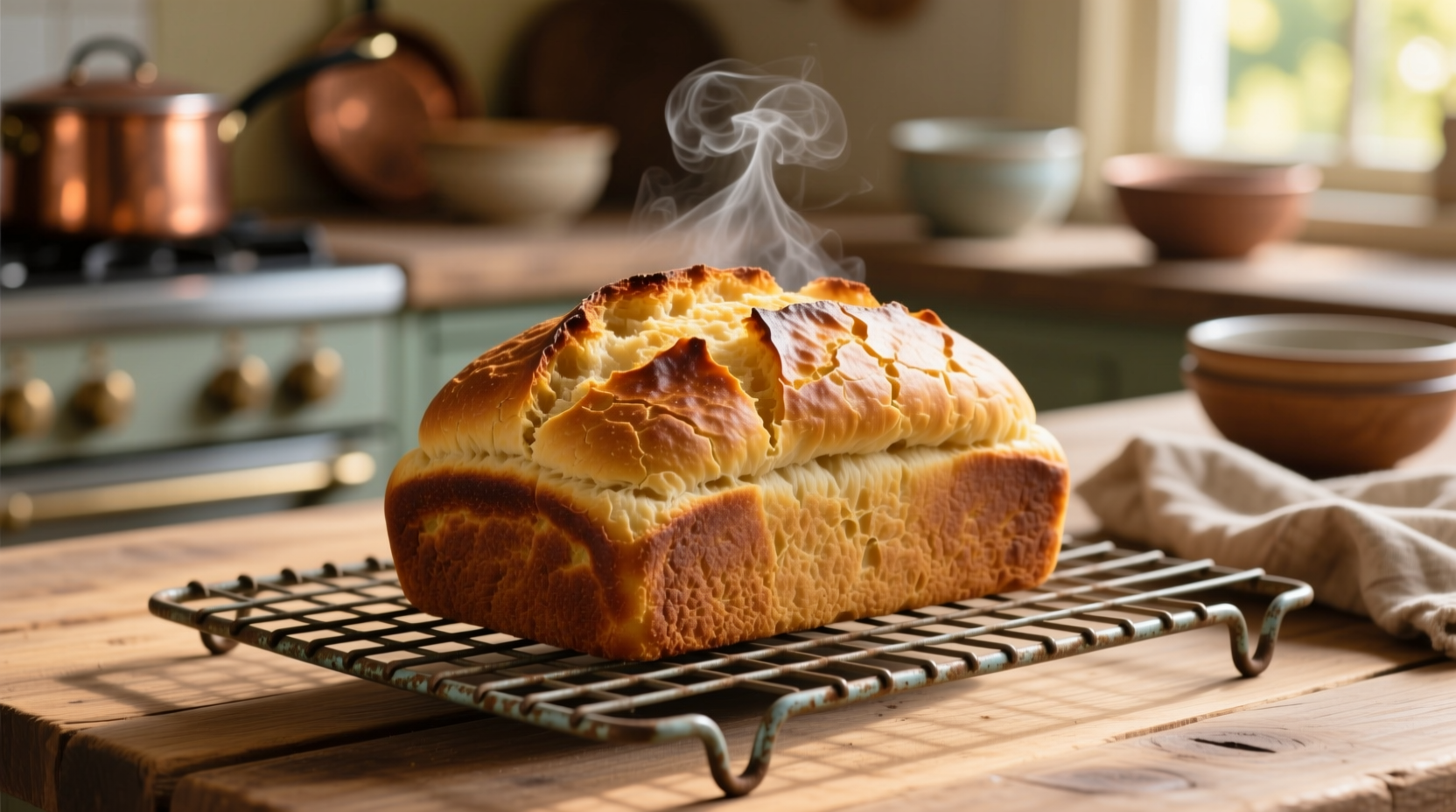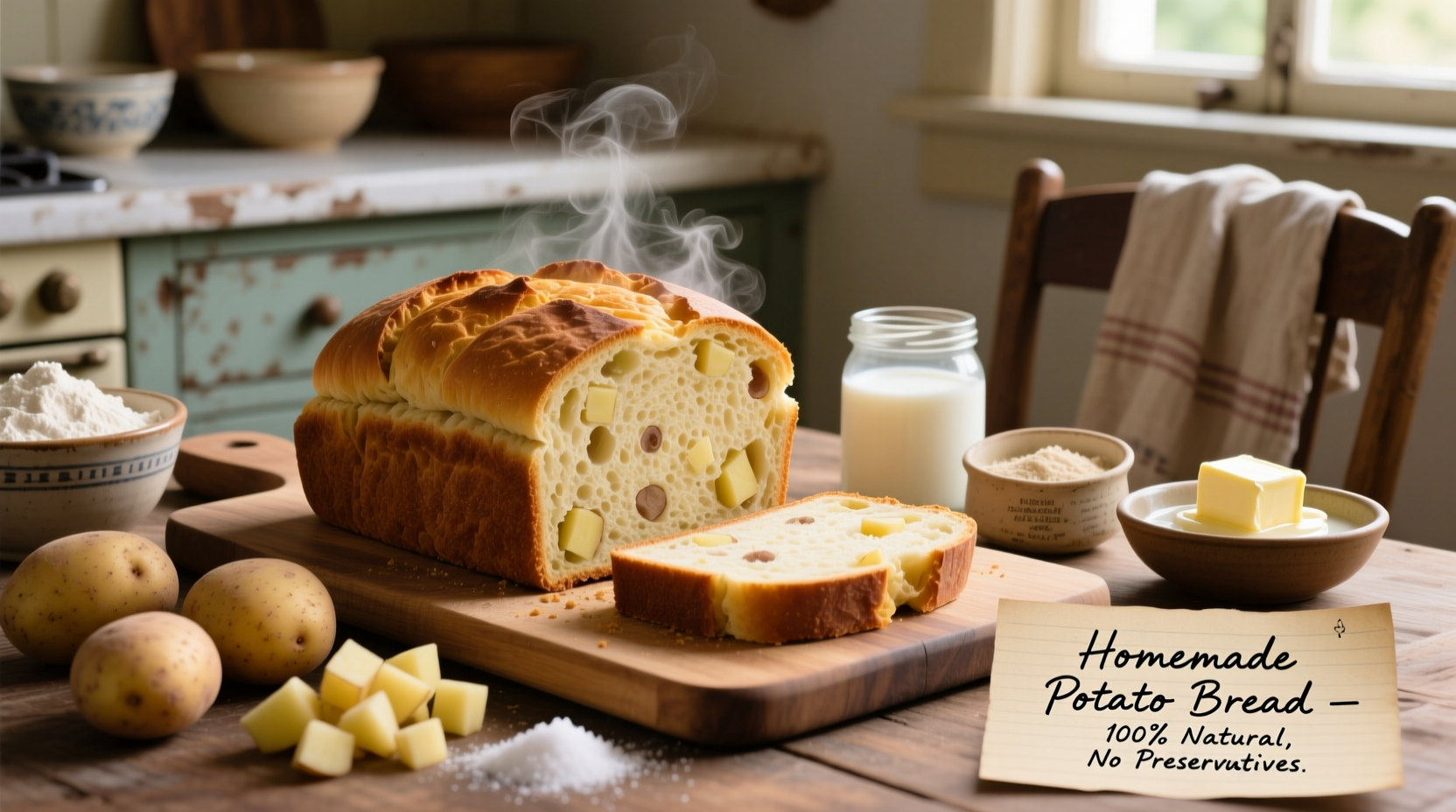Here's a reliable potato bread recipe that yields soft, moist bread with exceptional shelf life: Combine 1 cup mashed potatoes (cooled), 1 cup warm water, 2 1/4 tsp active dry yeast, 1/4 cup sugar, 1/4 cup melted butter, 1 tsp salt, and 3-4 cups all-purpose flour. Knead 8-10 minutes, let rise twice, then bake at 375°F (190°C) for 25-30 minutes until golden brown and hollow-sounding when tapped.
Have you ever wondered why potato bread stays fresher longer than regular bread while delivering that irresistible soft texture? This comprehensive guide reveals the science-backed recipe that professional bakers use to create perfect potato bread every time. You'll learn not just the steps, but why each technique matters and how to troubleshoot common issues before they ruin your bake.
The Secret History Behind Potato Bread
Potato bread isn't just a modern kitchen hack—it's a centuries-old solution to bread preservation. When potatoes were introduced to Europe in the 16th century, resourceful bakers discovered that adding mashed potatoes to dough dramatically extended freshness. According to the USDA's Cultural Food Traditions archive, Irish and Eastern European communities perfected potato bread techniques during the 1800s as a way to stretch limited flour supplies while preventing waste.
| Characteristic | Potato Bread | Regular White Bread |
|---|---|---|
| Shelf Life | 5-7 days (stays soft) | 2-3 days (stales quickly) |
| Texture | Moist, tender crumb | Drier, more elastic crumb |
| Rising Time | 15-20% faster | Standard rise time |
| Flavor Profile | Slightly sweet, complex | Neutral |
Why Potato Changes Everything: The Science Explained
Potatoes aren't just filler—they transform bread chemistry. The starches in potatoes absorb and retain moisture more effectively than flour alone, which explains the extended freshness. Food science research from USDA's Food Science division confirms that potato starch creates a more stable gluten network, resulting in that signature tender-yet-structured crumb. This makes potato bread particularly valuable in dry climates where regular bread stales rapidly.
Essential Ingredients: Quality Matters
Potatoes: Russet or Yukon Gold work best. Avoid waxy varieties that make dough gummy. Use 1 cup mashed (about 2 medium potatoes), fully cooled before adding to dough.
Yeast: 2 1/4 teaspoons active dry yeast (one standard packet). Instant yeast works too but requires slightly less water.
Flour: 3-4 cups all-purpose flour. Bread flour creates a chewier texture if preferred.
Fat: 1/4 cup melted butter or neutral oil. Butter adds flavor; oil extends softness.
Sweetener: 1/4 cup sugar or honey. Necessary for yeast activation and browning.
Equipment Checklist
- Stand mixer with dough hook (or large mixing bowl for hand-kneading)
- Instant-read thermometer (critical for potato and water temperature)
- 9x5 inch loaf pan
- Parchment paper
- Dough scraper
- Kitchen scale (for precise measurements)
Step-by-Step: The Foolproof Method
Preparation Phase: Avoiding Critical Mistakes
Temperature control is non-negotiable. Your mashed potatoes and water must be between 105-115°F (40-46°C)—any hotter kills yeast, any cooler slows fermentation. This precision explains why many home bakers fail with potato bread initially. Use an instant-read thermometer for both components before combining.
Mixing and Kneading: Building Structure
- Dissolve yeast and sugar in warm water, wait 5-7 minutes until foamy
- Mix in cooled mashed potatoes and melted butter
- Add 3 cups flour and salt, mix until shaggy dough forms
- Knead 8-10 minutes until smooth and elastic (windowpane test should work)
- Add remaining flour only as needed to prevent sticking
Proofing: The Double-Rise Secret
Unlike regular bread, potato dough benefits from two rises:
- First rise: Place in oiled bowl, cover, rest 60-90 minutes until doubled
- Second rise: After shaping, let rise 30-45 minutes until 1.5x size
This double-proofing creates superior texture—skipping it results in dense bread.
Baking: Precision Timing
Preheat oven to 375°F (190°C). Bake 25-30 minutes until internal temperature reaches 190°F (88°C) and bottom sounds hollow when tapped. Crucial tip: Remove bread from pan immediately after baking to prevent soggy crust.

Troubleshooting Common Problems
Dense texture? Usually caused by under-proofing or too much flour. Measure flour by weight (120g per cup) rather than scooping.
Crust too hard? Brush top with butter immediately after baking, or cover loosely with foil during last 10 minutes.
Dough won't rise? Check yeast expiration and liquid temperatures. Potato starch can sometimes inhibit yeast—ensure proper sugar quantity.
When Potato Bread Shines (and When to Choose Alternatives)
Potato bread excels in these situations:
- When you need bread that stays soft for sandwiches over multiple days
- In dry climates where regular bread stales rapidly
- For dinner rolls that maintain tenderness after reheating
However, avoid potato bread when:
- Humidity exceeds 70% (can make bread gummy)
- Seeking extremely crusty artisan bread (try sourdough instead)
- Using sweet potato (requires recipe adjustments for moisture content)
Delicious Variations to Try
- Herb & Garlic: Add 2 tbsp fresh rosemary and 3 minced garlic cloves
- Whole Wheat: Substitute 1 cup all-purpose flour with whole wheat
- Sweet Potato: Replace regular potatoes with same amount sweet potato puree
- Seeded: Mix in 1/4 cup sunflower and pumpkin seeds before final rise
Storage Secrets for Maximum Freshness
Wrap completely cooled bread in beeswax wrap or linen cloth, then place in paper bag. This maintains crust texture while preventing moisture loss. For longer storage, slice before freezing—thaw slices directly in toaster for fresh-baked taste.











 浙公网安备
33010002000092号
浙公网安备
33010002000092号 浙B2-20120091-4
浙B2-20120091-4